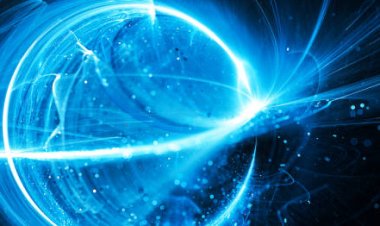What is Quantum Mechanics?
Introduction to Quantum Mechanics
Quantum mechanics is a theory that explains how small things like electrons move. It’s like Newton’s law: F = ma, which only works for microscopic objects, but is still valid in the microscopic world.
Why is it called “quantum” mechanics?
If you are learning quantum mechanics for the first time, or you have been asked by a friend who wants to know about quantum mechanics, your first question might be why it is called “quantum” mechanics? The immediate answer to this question is that quantum mechanics is a theory that can explain the various quantized phenomena we have encountered in experiments, which cannot be explained by classical mechanics. For example, the allowable energy level of an electron in a hydrogen atom is quantized, that is, we have 1s, 2s, 2p, …… all the discrete orbits containing quantized or discrete permitted energies.
Although “quantum” is one of the possible consequences of quantum mechanics, quantization has not been created within quantum mechanics. The “quantified” feature comes from the fact that you are asking about the bound value of the bounded system, or you can say that it comes from the boundary condition. For example, the amount of total energy allowed by an electron in a hydrogen atom is because the electron is connected to the proton by the Coulomb potential. In addition, the amount of a component of spin (e.g., the eigenvalue of S_z) is due to the condition of the periodic limit of the special rotation (i.e., exp {i2π} = exp {i0} or the same to the world after 360 rotation). Should be seen.). For free particles in quantum mechanics, nothing is quantitative. The speed and energy of a free particle are constant.
Determining quantities as a result of boundary conditions is not so mysterious and is not specific to quantum mechanics. In classical physics, we have a similar situation. For example, the vibration modes of a classic string with two fixed ends are quantified (e.g., strings in a violin). It produces sound waves that are superpositions of its base frequencies and all the harmonics are equal to the numerical multiplication of the frequencies base frequencies.
Of course, I’m talking about the true meaning of the word “quantum” here. Nowadays, people only use the word “quantization” as a technical term to refer to “quantum mechanization”. For example, jargon canonical quantization in quantum mechanics means we take the commutator [x, p] ≡ XP-px = iℏ, which was equal to zero in the classical case. In other words, it is a process that values performance position and momentum operators, thus making the system “quantum mechanized”.
By the way, you can guess that the existence of photons, which are quantized electromagnetic waves, is also the result of quantum mechanics. However, problems related to photons are not usually solved in standard quantum mechanics. To fully understand what a photon is, we need a theory called Quantum Field Theory (QFT), a quantum version of classical field theory. (Specifically, Quantum Electrodynamics, QED, which is a quantum version of electrodynamics.) In QED, photons are thought of as quantized electromagnetic waves, while electrons are thought of as the quantized dirk field of electrons. ۔ It also explains why electrons are identical particles because all electrons are the nucleus of a single quantized Derek field.
